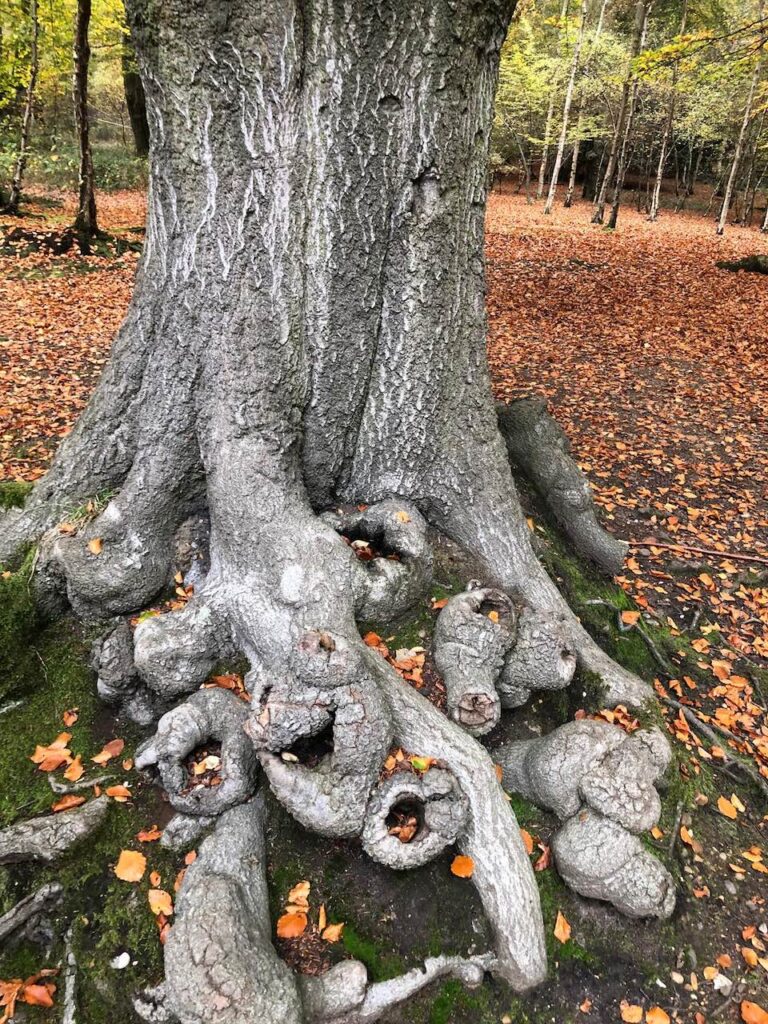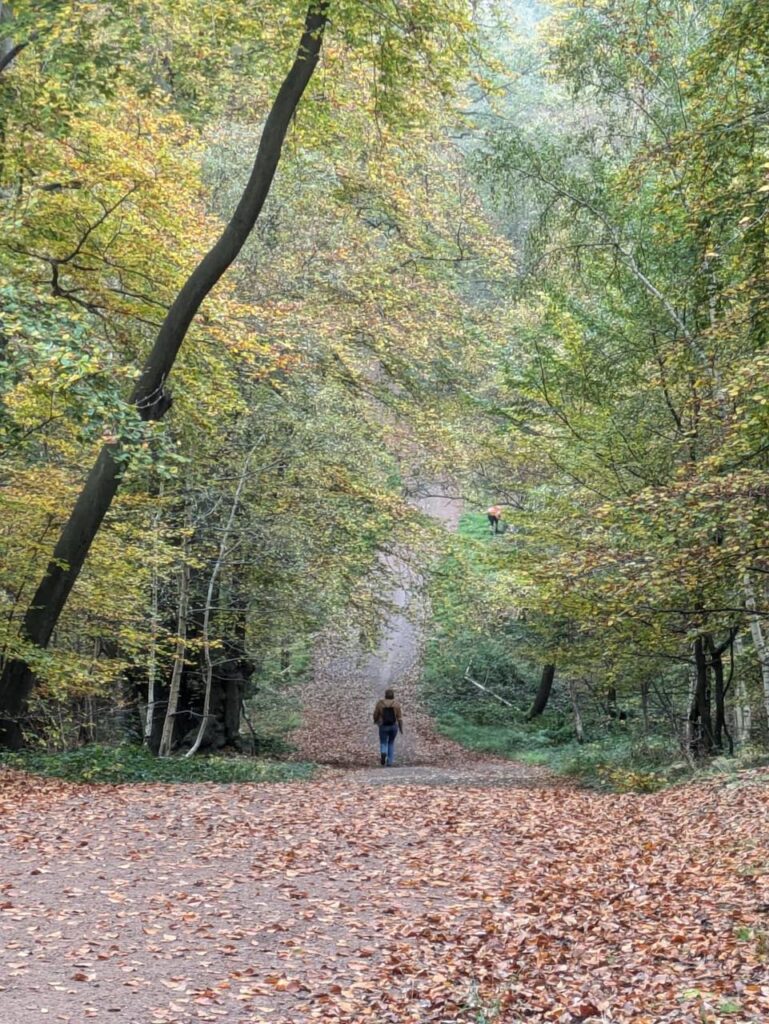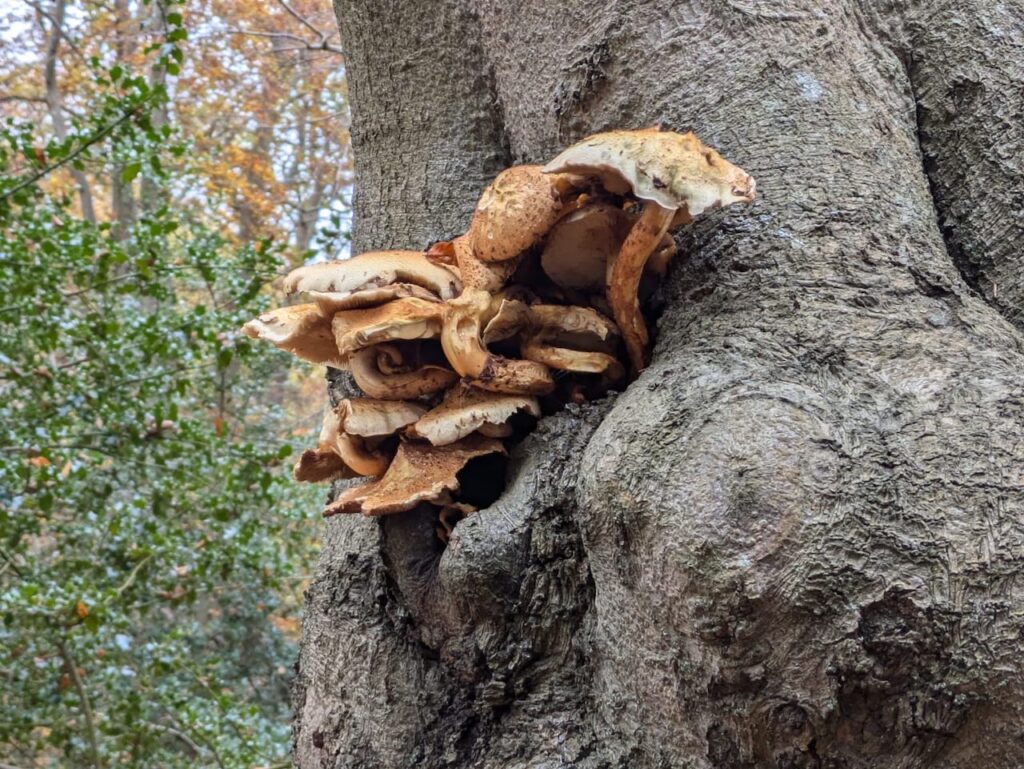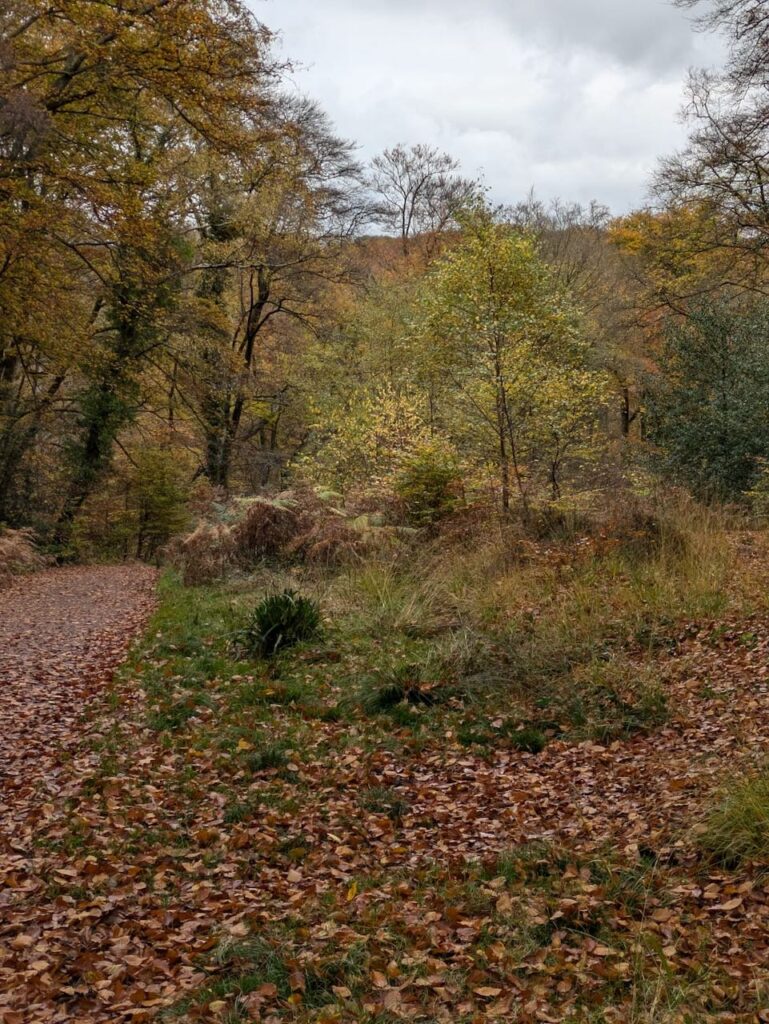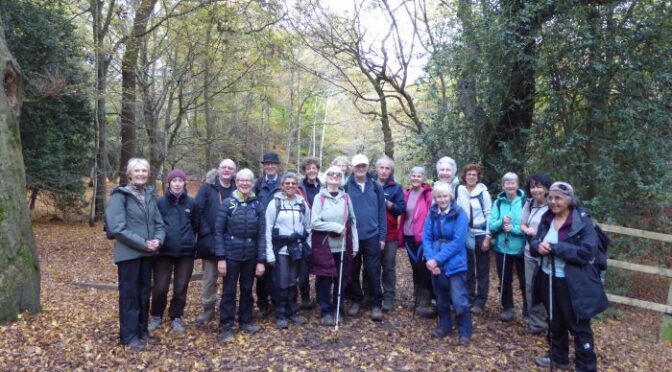A good turnout of Polyramblers met at Chingford Station. The sky was covered with greyish cloud but there wasn’t any wind to speak of. The trees were magnificent! We thought that recent rain and relatively mild temperatures were the reason that a lot of trees were still covered in green leaves while the beech leaves on the forest floor were glorious! After the grassy area near the station, the walk was in amongst a variety of trees, including beech, hornbeam, oak, birch, rowan and holly, in all their autumn splendour. We mostly followed gravel paths, undulating sometimes steeply, with only an occasional puddle. There weren’t many other walkers or cyclists, despite being so near London. Perhaps people were more involved in Halloween, Diwali or Guy Fawkes activities! It was mild enough to eat our lunchtime picnics at the benches provided at High Beach. According to the Oxford Dictionary of British Place Names, the name first appeared as Highbeach-green in 1670. The Dictionary tells us that it is “Probably named from the beech-trees here” – so nothing to do with more recent spelling discrepancies or failings in modern education! While I’m talking about place names, I see that Chingford may be based on a corruption of “shingle” so perhaps the river in the valley came up higher in former times! There is a view of the valley from the green at High Beach but the trees at the top of the slope have grown up and out, obscuring the view to some extent. Some members of the group took the opportunity to explore the Visitor Centre.
As regards the beech trees, we learned about the pollarding which went on until it was stopped in 1878 so thereafter the trees were able to grow to a normal size but still bearing the shape formed by the coppicing. I am informed that some of these beeches are believed to be as much as 1000 years old! They are certainly very tall. After our lunch break, as the path undulated between the trees, we spent some time in a clearing on one side, carpeted with golden beech leaves, concentrating on breathing deeply and calmly, admiring the height and width of the trees, listening to the rustle of the leaves, no road or air traffic to spoil the moment. Generally being amongst trees is known as “forest bathing” (nothing to do with dipping in water!). It is said that essential oils, known as phytoncides, are emitted by trees to protect themselves from germs and insects and, seemingly, they have a positive impact on humans too by naturally boosting our immune system. Studies show that after only a short amount of time in a forest, stress levels are reduced. Walking among trees decreases the body’s stress response, which in turn lowers our levels of cortisol, the stress hormone. As a result we feel calmer. Ideally it should be a digital detox, that is, not carrying any electronics! I must mention that to the group in the briefing next time!
As we neared the end of the walk and the hum of the M25 got louder (even though it is ‘cut and covered’ at this point!), we passed by the area of Ambresbury Banks, the site of an Iron Age fort. At that time, 700 BCE, the views would have been clear of trees. It is pure legend that this is the place where Boudicca made her last stand against the Romans in the year 61! It is another area we will have to explore on a future visit.
At the end of the forest we made our way to Epping High Street. Some of the party made their way to the tube station while the rest of us continued along to Belgique Patisserie, where the staff showed no amazement at the size of the group or horror at our footwear (not muddy as it happened!) and welcomed us with tea, coffee and a splendid array of enticing cakes and pastries! We agreed it was a very pleasant way to round off a very enjoyable day.
Pam
Photos by Stephen, Maggie and Hilary
